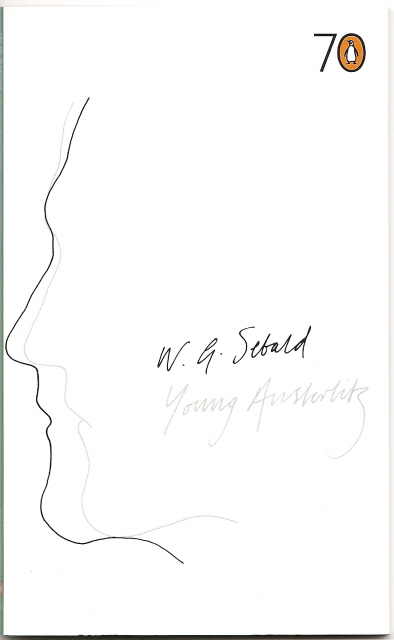James Wood and W.G. Sebald
On July 10, 1997, scarcely a year after the publication of The Emigrants (his first book to appear in English translation), W.G. Sebald sat down with critic James Wood in New York city for an interview, which appeared the next spring in a relatively obscure literary journal out of Toronto called Brick. Wood had already come to realize that The Emigrants was a game-changer. “Walter Benjamin said that all great works found a new genre or dissolve an old one,” Wood wrote in his opening sentence. “The Emigrants is such a book.” Wood continued on to praise the book for its “fastidiousness” and the way “it forces the largest abstract questions on us, while never neglecting our hunger for the ordinary. It is full of this extraordinary, careful detail…”
Wood’s questioning of Sebald dealt with many of the issues that have come to define Sebald: his use of photographs, the intermingling of fact and fiction, the nature of Sebald’s prose, and his approach to narration. Here’s Sebald on the latter topic:
I think that fiction writing, which does not acknowledge the uncertainty of the narrator himself, is a form of imposture and which I find very, very difficult to take. Any form of authorial writing, where the narrator sets himself up as stagehand and director and judge and executor in a text, I find somehow unacceptable. I cannot bear to read books of this kind.
…I’d much rather read autobiographical texts of a Chateaubriand or a Stendhal, that sort of thing…I find there is a degree of realness in it which I can calculate. Whereas with the novels, I find we are subjected to the rules and laws of fiction to a degree which I find tedious.
Two years later, Wood elaborated on these ideas in his essay “W.G. Sebald’s Uncertainty,” published in his 1999 collection The Broken Estate. There, Wood discussed both The Emigrants and The Rings of Saturn, emphasizing the way in which facts (including photographs) became fictive in Sebald’s work as a part of Sebald’s strategy of investing “his narration with scrupulous uncertainty.” For Sebald, “facts are indecipherable, and therefore tragic.” Quite in opposition to Proust, “in Sebald, we are defined by the terrible abundance of our lacunae.” Having read The Rings of Saturn, Wood views Sebald’s use of language with even greater clarity. “Sebald’s language is an extraordinary, almost antiquarian edifice, full of the daintiest lusters.” The “quality of melodrama and extremism running alongside a soft mutedness” is, Wood thinks, practically “Gothic.”
Last month, Wood returned to Sebald again, writing the introduction to Penguin’s tenth anniversary edition of Austerlitz, which he characterizes as a “journey of detection,” though, he warns, “the book really represents the deliberate frustration of detection, the perpetuation of an enigma.” Sebald noted in his 1997 interview that he was more interested in biography than in fiction and Austerlitz represents his most extended attempt to write a fictional biography on his own terms. In his introduction, Wood continues to elaborate on the aspects of Sebald that first attracted his attention in 1997, but he lingers on Sebald’s tactic of forcing the reader into Austerlitz’s shoes by strategically withholding information and by layering Austerlitz’s narrative behind his own narrator’s re-telling of Austerlitz’s story. “What is so delicate is how Sebald makes Austerlitz’s story a broken, recessed enigma, whose meaning the reader must impossibly rescue.” In the end, Wood says, “a life has been filled in for us but not a self.”
The new Penguin edition is really a reissue of their standard paperback edition of Austerlitz with the insertion of a new twenty-one page essay by James Wood and the addition of a faux gold seal on the front cover. Nothing else has changed – not even the blurbs on the cover. But since it does include a new introduction, most collectors will treat it as a new edition and will want the first printing, which Penguin has appropriately marked with a tiny “1” on the copyright page.


































